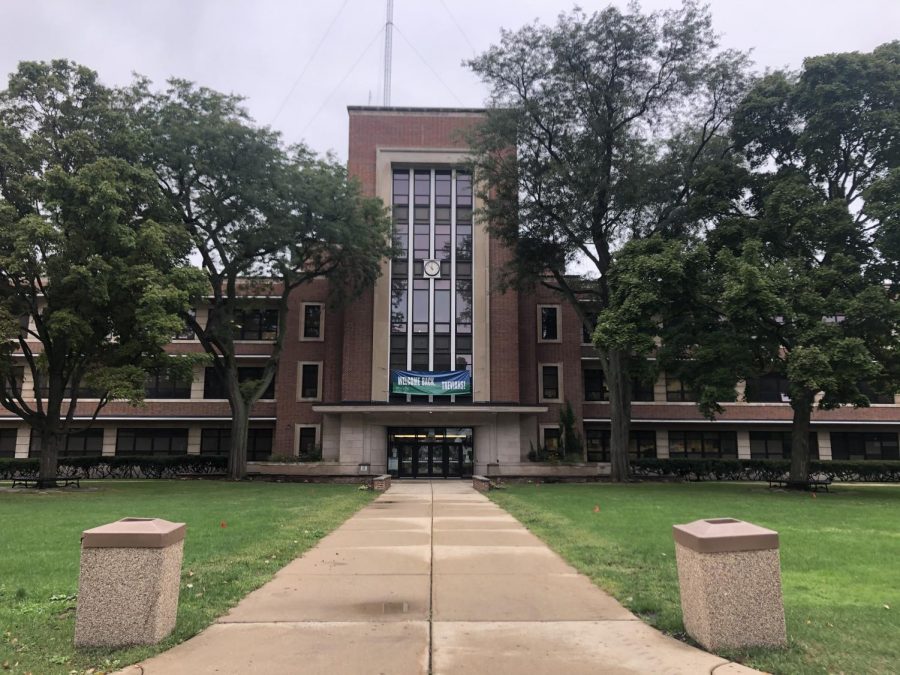Students rattled by seemingly larger classes
Students struggle to connect with teachers and peers as they adapt to in-person learning.
NT News File Photo
At New Trier, the intense nature of extracurriculars prevents students in their pursuit of multiple activities and leadership opportunities
With the full student body returning to the Winnetka campus this year, many students said their classes feel overflowing, which has made it difficult to adjust after a year remote.
Senior Nick Wilson said his Great Books period was so full that there were not enough desks to accommodate the full class on the first day back, leaving some students standing.
“From the first day of school, it was absolutely clear not just that class sizes were larger than I had ever seen at New Trier, but that the sheer size made it more difficult for class to function,” said Wilson.
Larger class sizes seem to be occurring for almost all subjects, as sophomore Piper Peterson said her Spanish period has about 30 students, making it hard to meet anyone.
“I feel like I can’t connect with anyone because of how many people there are. It makes it difficult for the environment to feel like a class,” said Peterson.
Senior Kyra Templin had a similar experience in her Calculus class, which has around 30 students.
“I’m so scared to ask questions to the teacher and I feel like I won’t learn anything this year because there are so many people in the class,” Templin said. “What happens if 10 students need individual help, all at once?”
Core classes typically average about 22 students at New Trier, so while some periods may have a few students above the average, other classes will have a few less than average, said Assistant Superintendent for Curriculum and Instruction, Peter Tragos.
“We try to balance out the class sizes, but it depends on a lot of factors like student schedules, department, type of course, and level,” Tragos said. “Depending on the class’s specific circumstances, the students will benefit from either larger or smaller classes.”
Outside of academic courses, KW leaders feel the size of Kinetic Wellness classes have made it especially challenging for them to manage their groups.
Senior Allison Lee, the sole KW leader for her period, was paired with a class of around 45 students.
“The sheer size of the group makes it hard to control, especially because most KW classes have two leaders. I can only watch a limited number of students at a time, so many will start goofing off during class and not paying attention,” said Lee.
Historically, KW classes have always been larger because they have student athletes who are exempt from attending. Depending on the season, those students will have the period off, effectively decreasing classroom attendance, said Tragos.
Some students, such as Maryanne Xu, think there should be a cap for how many students are placed into one classroom.
“The administration shouldn’t be having more than 25 people in each individual class,” Xu said. “Otherwise, it makes it hard for students to build a relationship with their teacher, and it would also be much safer during the pandemic.”
Wilson agreed with Xu’s idea about the cap, saying it was especially important for classes to be small this year for students to readjust.
“In a year that’s bound to be difficult for teachers as they return from hybrid format, it’s really frustrating to see administrative decisions make their jobs even harder by giving them such large classes,” said Wilson. “I’m definitely disappointed that we’re not able to keep teacher-student ratios at a lower level this year, and make the transition easier.”
With most classes ranging from 20-25 students this year, Tragos said it would be interesting to note how perception comes into play in affecting how students view their classes.
Some rooms in the old building, specifically on the third floor, are much smaller than classrooms in the new building, so even average classes may seem larger than normal to students because they are in a compact room.
“Especially in a year after remote learning, it’s possible that some students believe their classes are significantly larger when it’s just part of the shock of returning back,” said Tragos.







































